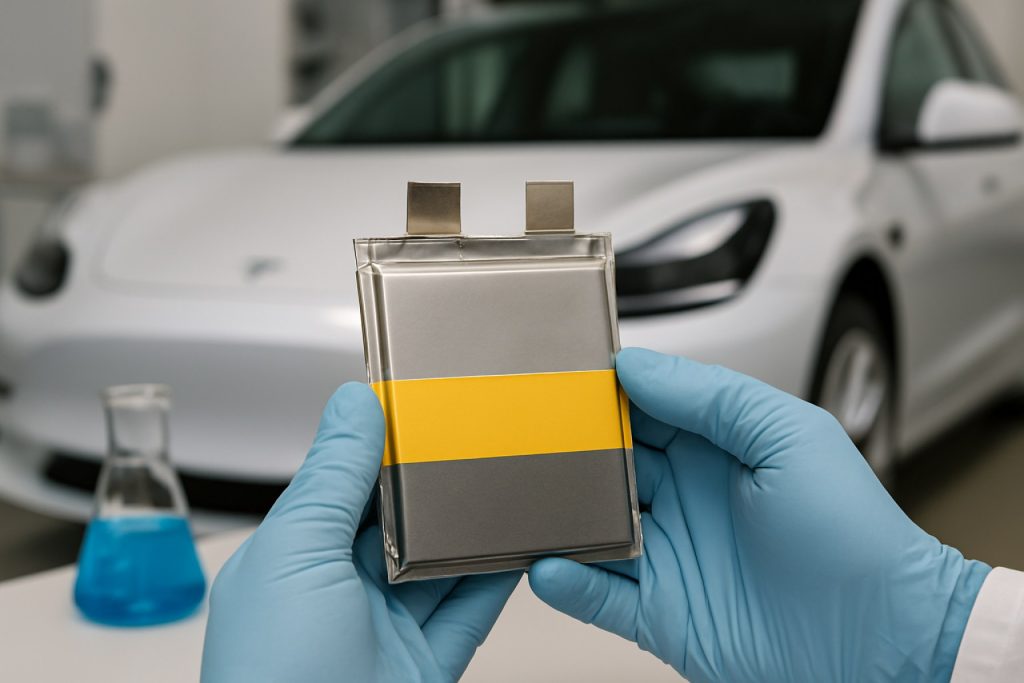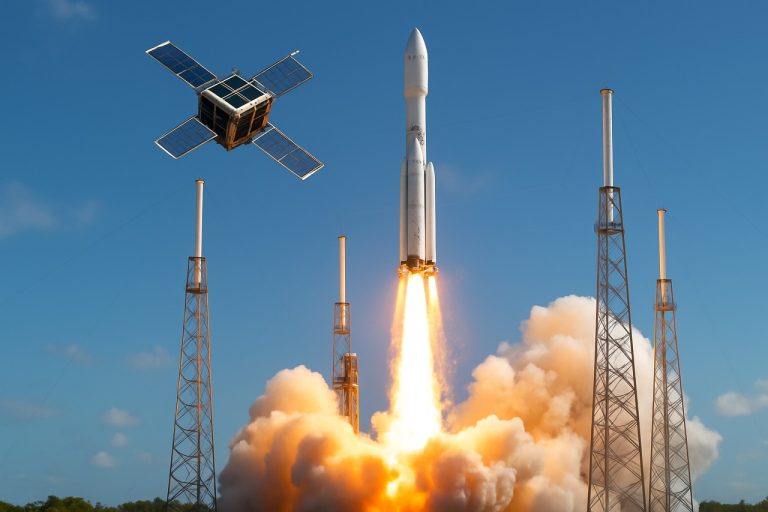
Electrolyte Development for Solid-State EV Batteries in 2025: Market Dynamics, Technology Innovations, and Strategic Forecasts Through 2030. Explore Key Trends, Regional Leaders, and Growth Opportunities Shaping the Future of Electric Mobility.
- Executive Summary and Market Overview
- Key Technology Trends in Solid-State EV Battery Electrolytes
- Competitive Landscape: Leading Players and Emerging Innovators
- Market Growth Forecasts (2025–2030): CAGR, Volume, and Value Analysis
- Regional Analysis: North America, Europe, Asia-Pacific, and Rest of World
- Challenges and Opportunities in Electrolyte Development
- Future Outlook: Strategic Roadmap and Investment Priorities
- Sources & References
Executive Summary and Market Overview
The global push toward electrification in the automotive sector is accelerating the development of advanced battery technologies, with solid-state batteries (SSBs) at the forefront due to their potential for higher energy density, improved safety, and longer lifespan compared to conventional lithium-ion batteries. Central to the advancement of SSBs is the innovation in electrolyte materials, which replace the flammable liquid electrolytes with solid alternatives, enabling the use of lithium metal anodes and reducing risks of leakage and thermal runaway.
Electrolyte development for solid-state EV batteries encompasses a range of material classes, including inorganic ceramics (such as sulfides, oxides, and phosphates), solid polymers, and hybrid composites. Each class presents unique challenges and opportunities in terms of ionic conductivity, interfacial stability, manufacturability, and cost. The market is witnessing significant R&D investments from established automotive OEMs, battery manufacturers, and material science companies, all aiming to overcome technical barriers and achieve commercial viability.
According to IDTechEx, the solid-state battery market is projected to reach over $8 billion by 2033, with electrolyte innovation being a critical driver of this growth. In 2025, the focus is on scaling up promising electrolyte chemistries, such as sulfide-based and oxide-based ceramics, which offer high ionic conductivity and compatibility with high-voltage cathodes. Companies like Toyota Motor Corporation and QuantumScape are leading efforts to commercialize SSBs, with pilot production lines and partnerships aimed at integrating advanced electrolytes into next-generation EVs.
-
Key Trends (2025):
- Increased collaboration between automakers and material suppliers to accelerate electrolyte scale-up and validation.
- Emergence of hybrid and composite electrolytes to balance conductivity, flexibility, and manufacturability.
- Growing patent activity and strategic investments, as seen with Solid Power and Samsung SDI, targeting breakthroughs in solid electrolyte performance.
Despite technical hurdles—such as dendrite suppression, interface engineering, and cost reduction—the market outlook for solid-state battery electrolytes in 2025 is robust. The sector is poised for rapid growth as pilot projects transition to commercial-scale production, supported by regulatory incentives and the automotive industry’s commitment to electrification.
Key Technology Trends in Solid-State EV Battery Electrolytes
Electrolyte development is at the heart of innovation in solid-state EV battery technology, with 2025 poised to see significant advancements. Unlike conventional lithium-ion batteries that use liquid electrolytes, solid-state batteries employ solid electrolytes, which promise enhanced safety, higher energy density, and longer cycle life. The race to commercialize these batteries has spurred a surge in research and investment, with automakers and battery manufacturers targeting mass-market deployment within the next few years.
Key technology trends in 2025 center on three main classes of solid electrolytes: sulfide-based, oxide-based, and polymer-based materials. Sulfide electrolytes, such as those developed by Toyota Motor Corporation and Samsung SDI, are gaining traction due to their high ionic conductivity and compatibility with lithium metal anodes. However, challenges remain in terms of air sensitivity and interface stability, prompting ongoing research into protective coatings and advanced manufacturing techniques.
Oxide-based electrolytes, including garnet-type materials like LLZO (lithium lanthanum zirconium oxide), are being explored by companies such as QuantumScape and Solid Power. These materials offer excellent chemical stability and safety but face hurdles related to high processing temperatures and grain boundary resistance. Recent breakthroughs in sintering methods and dopant engineering are helping to address these issues, making oxide electrolytes increasingly viable for automotive applications.
Polymer-based electrolytes, while offering flexibility and ease of processing, have historically suffered from lower ionic conductivity at room temperature. In 2025, research is focused on hybrid approaches that combine polymers with ceramic or glassy fillers to enhance performance. Companies like BMW Group and Robert Bosch GmbH are investing in these hybrid systems, aiming to balance manufacturability with electrochemical performance.
Another notable trend is the integration of advanced characterization and simulation tools to accelerate electrolyte discovery and optimization. Collaborations between industry and academia, such as those led by the National Renewable Energy Laboratory, are leveraging machine learning and high-throughput experimentation to identify promising electrolyte compositions more rapidly.
Overall, 2025 is expected to be a pivotal year for solid-state EV battery electrolytes, with incremental improvements in material properties, manufacturability, and scalability driving the industry closer to commercial adoption.
Competitive Landscape: Leading Players and Emerging Innovators
The competitive landscape for electrolyte development in solid-state EV batteries is rapidly evolving, with established industry leaders and agile startups vying for technological supremacy. As automakers and battery manufacturers race to commercialize solid-state batteries, the focus has shifted to the development of advanced solid electrolytes that can deliver higher energy density, improved safety, and longer cycle life compared to conventional liquid electrolytes.
Among the leading players, Toyota Motor Corporation has maintained a prominent position, leveraging decades of research in solid-state battery technology. Toyota’s proprietary sulfide-based solid electrolytes are considered among the most advanced, with the company targeting limited commercial deployment in hybrid vehicles by 2025. Similarly, Samsung SDI has made significant strides, unveiling prototype cells utilizing argyrodite-type sulfide electrolytes that promise enhanced ionic conductivity and stability.
In the United States, QuantumScape has attracted considerable attention and investment, particularly after demonstrating a ceramic-based solid electrolyte that enables fast charging and high energy density. The company’s partnerships with Volkswagen Group and other automakers underscore its strategic importance in the global supply chain. Meanwhile, Solid Power is advancing both sulfide and oxide-based electrolyte chemistries, with pilot production lines supplying sample cells to automotive partners such as Ford and BMW.
Emerging innovators are also shaping the competitive landscape. ProLogium Technology, based in Taiwan, has developed a proprietary oxide ceramic electrolyte and is collaborating with European automakers to scale up production. In Japan, Idemitsu Kosan is commercializing sulfide-based solid electrolytes, while Mitsui Chemicals is investing in polymer-based alternatives. Startups such as Sion Power and Blue Current are exploring hybrid and polymer-ceramic electrolyte systems, aiming to overcome the dendrite formation and interface challenges that have historically limited solid-state battery performance.
The sector is characterized by intense intellectual property activity, strategic partnerships, and significant venture capital inflows. As the technology matures, the interplay between established battery giants and nimble innovators will be critical in determining which electrolyte chemistries achieve commercial viability and widespread adoption in the EV market by 2025 and beyond.
Market Growth Forecasts (2025–2030): CAGR, Volume, and Value Analysis
The market for electrolytes tailored for solid-state electric vehicle (EV) batteries is poised for robust expansion between 2025 and 2030, driven by accelerating EV adoption, advancements in battery technology, and increasing investments from both established players and startups. According to projections by IDTechEx, the global solid-state battery market is expected to reach a value of approximately $8 billion by 2030, with electrolytes constituting a significant share of this value chain. The compound annual growth rate (CAGR) for solid-state battery electrolytes is forecasted to exceed 30% during this period, outpacing the broader lithium-ion battery market.
Volume-wise, the demand for solid-state electrolytes—encompassing both inorganic ceramics and advanced polymers—is projected to surge as automakers transition from pilot projects to mass production. Benchmark Mineral Intelligence estimates that by 2030, global production capacity for solid-state batteries could surpass 200 GWh, with electrolyte materials accounting for a critical bottleneck in the supply chain. This translates to a multi-kiloton demand for solid-state electrolytes, particularly sulfide-based and oxide-based ceramics, as well as novel polymer blends.
Value analysis indicates that the average selling price (ASP) of solid-state electrolytes will remain elevated through the mid-2020s due to limited manufacturing scale and the complexity of material synthesis. However, as production processes mature and economies of scale are realized, ASPs are expected to decline by 20–30% by 2030, according to Wood Mackenzie. This price reduction will be a key enabler for the broader commercialization of solid-state EV batteries, making them more competitive with conventional lithium-ion technologies.
- 2025–2030 CAGR for solid-state battery electrolytes: 30%+
- Projected market value by 2030: $8 billion (electrolytes as a major segment)
- Estimated global production capacity: 200+ GWh solid-state batteries by 2030
- ASP decline for electrolytes: 20–30% by 2030
In summary, the electrolyte segment for solid-state EV batteries is set for exponential growth in both volume and value, underpinned by technological breakthroughs and scaling efforts from industry leaders such as Toyota Motor Corporation and QuantumScape Corporation.
Regional Analysis: North America, Europe, Asia-Pacific, and Rest of World
The regional landscape for electrolyte development in solid-state EV batteries is marked by distinct strategies, investment levels, and technological focus across North America, Europe, Asia-Pacific, and the Rest of World. Each region’s approach is shaped by its automotive industry maturity, government policies, and the presence of leading battery innovators.
- North America: The U.S. and Canada are intensifying efforts to localize battery supply chains and foster advanced electrolyte research. Major automakers and startups are collaborating with research institutions to develop sulfide and oxide-based solid electrolytes, aiming for higher safety and energy density. The U.S. Department of Energy’s Battery500 Consortium and investments from companies like QuantumScape and Solid Power are accelerating commercialization timelines. The Inflation Reduction Act is also incentivizing domestic R&D and manufacturing, positioning North America as a key player in next-generation battery materials.
- Europe: Europe’s focus is on sustainable and scalable solid-state battery technologies, with strong regulatory support for green mobility. The European Battery Alliance and Horizon Europe programs are channeling funds into solid electrolyte innovation, particularly ceramic and polymer-based systems. Companies like Blue Solutions and BMW Group are piloting solid-state battery modules, while VARTA AG and Solid Power (with European partnerships) are advancing electrolyte formulations tailored for automotive integration. The region’s emphasis on circularity and local sourcing is influencing electrolyte material choices.
- Asia-Pacific: Asia-Pacific, led by Japan, South Korea, and China, dominates global solid-state battery R&D and patent filings. Japanese firms like Toyota Motor Corporation and Panasonic are pioneering sulfide-based electrolytes, targeting mass-market EV deployment by 2025-2027. South Korea’s Samsung SDI and LG Energy Solution are investing in oxide and polymer electrolyte platforms. China’s CATL is scaling up pilot production and exploring hybrid electrolyte chemistries. Government-backed initiatives and robust supply chains give Asia-Pacific a competitive edge in rapid commercialization.
- Rest of World: Other regions, including India, Australia, and the Middle East, are in earlier stages of solid-state electrolyte development. Efforts are primarily focused on academic research and pilot collaborations with global battery leaders. Australia’s mining sector is exploring lithium and rare earth supply for next-gen electrolytes, while India’s government is incentivizing local R&D through the National Mission on Transformative Mobility.
Overall, while Asia-Pacific leads in scale and speed, North America and Europe are leveraging policy and innovation ecosystems to close the gap, with 2025 expected to see intensified cross-regional partnerships and pilot deployments of advanced solid-state electrolytes for EVs.
Challenges and Opportunities in Electrolyte Development
The development of electrolytes for solid-state electric vehicle (EV) batteries presents a complex landscape of challenges and opportunities as the industry moves toward commercialization in 2025. Solid-state batteries promise higher energy density, improved safety, and longer lifespans compared to conventional liquid electrolyte lithium-ion batteries. However, the transition from laboratory-scale innovation to mass-market adoption hinges on overcoming several technical and economic hurdles.
One of the primary challenges is the identification and synthesis of solid electrolytes that combine high ionic conductivity with chemical and electrochemical stability. Materials such as sulfide-based, oxide-based, and polymer-based electrolytes each offer distinct advantages and drawbacks. Sulfide electrolytes, for example, exhibit high ionic conductivity but are sensitive to moisture and can release toxic gases, complicating manufacturing and handling processes. Oxide electrolytes are more stable but often suffer from lower conductivity and require high-temperature processing, which increases production costs IDTechEx.
Interface compatibility between the solid electrolyte and electrode materials is another significant barrier. Poor interfacial contact can lead to increased resistance, dendrite formation, and reduced battery performance. Advanced engineering solutions, such as the development of interlayer coatings or the use of composite electrolytes, are being explored to address these issues. Companies like Toyota Motor Corporation and QuantumScape are investing heavily in proprietary electrolyte formulations and interface engineering to enhance cycle life and safety.
Despite these challenges, the opportunities are substantial. Solid-state electrolytes enable the use of lithium metal anodes, which can significantly boost energy density—potentially extending EV driving ranges beyond 500 miles per charge. Additionally, the inherent non-flammability of many solid electrolytes addresses safety concerns associated with thermal runaway in liquid-based systems. The market for solid-state batteries is projected to grow rapidly, with BloombergNEF forecasting commercial deployments in premium EVs as early as 2025.
- Key challenges: ionic conductivity, stability, interface engineering, scalability, and cost.
- Key opportunities: higher energy density, improved safety, longer cycle life, and new design flexibility for EVs.
Continued collaboration between material scientists, battery manufacturers, and automakers will be crucial to unlocking the full potential of solid-state electrolyte technology in the EV sector.
Future Outlook: Strategic Roadmap and Investment Priorities
The future outlook for electrolyte development in solid-state EV batteries is shaped by a strategic roadmap that prioritizes both technological innovation and targeted investment. As automakers and battery manufacturers race to commercialize solid-state batteries, the focus is on overcoming key challenges related to ionic conductivity, interfacial stability, manufacturability, and cost-effectiveness. The year 2025 is expected to be pivotal, with several industry leaders and consortia advancing pilot-scale production and scaling up promising electrolyte chemistries.
Strategically, the roadmap for 2025 centers on three main electrolyte categories: sulfide-based, oxide-based, and polymer-based electrolytes. Sulfide electrolytes, favored for their high ionic conductivity and compatibility with lithium metal anodes, are a primary focus for companies like Toyota Motor Corporation and Solid Power. However, their sensitivity to moisture and interface reactivity necessitate further R&D investment. Oxide electrolytes, such as those developed by QuantumScape, offer superior chemical stability but face challenges in processability and densification. Polymer electrolytes, while easier to process, require breakthroughs in conductivity at ambient temperatures to be viable for mass-market EVs.
Investment priorities for 2025 are expected to align with these technical roadblocks. According to Benchmark Mineral Intelligence, venture capital and strategic corporate funding are increasingly directed toward startups and research groups working on scalable synthesis methods, interface engineering, and hybrid electrolyte systems that combine the strengths of multiple chemistries. Public-private partnerships, such as those fostered by the U.S. Department of Energy and the European Battery Alliance, are also accelerating pilot projects and pre-commercial demonstrations.
- Short-term (2025): Emphasis on pilot-scale validation of sulfide and oxide electrolytes, with select OEMs targeting limited commercial deployment in premium EV models.
- Mid-term (2026–2028): Scale-up of manufacturing processes, cost reduction initiatives, and integration of advanced interface coatings to improve cycle life and safety.
- Long-term (post-2028): Widespread adoption contingent on achieving parity with liquid electrolyte systems in terms of cost, performance, and manufacturability.
In summary, the 2025 strategic roadmap for solid-state EV battery electrolytes is defined by targeted investments in high-potential chemistries, collaborative R&D, and a phased approach to commercialization, with the ultimate goal of enabling safer, higher-energy-density batteries for next-generation electric vehicles.
Sources & References
- IDTechEx
- Toyota Motor Corporation
- QuantumScape
- Robert Bosch GmbH
- National Renewable Energy Laboratory
- Volkswagen Group
- ProLogium Technology
- Idemitsu Kosan
- Sion Power
- Benchmark Mineral Intelligence
- Wood Mackenzie
- Blue Solutions
- VARTA AG
- Toyota Motor Corporation
- CATL



